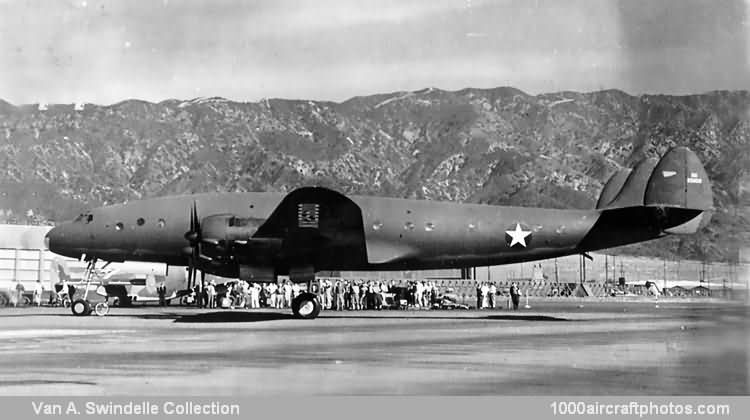10/31/2009. Remarks by Johan Visschedijk: "The Model 049 was a 44-seat pressurized high-speed commercial airliner designed for Trans World Airlines (TWA) by Kelly Johnson and Hall Hibbard, respectively Lockheed's chief aerodynamicist and chief engineer. The USA entered WW II on December 7, 1941, and subsequently requisitioned aircraft manufacturer's production lines, including Lockheed's.
In 1942 the USAAF ordered 180 of the new transport as the C-69, s/n 42-94549 to 42-94728 (by the end of the war only eleven had been produced, the balance was cancelled. Meanwhile orders for 84 Model 049 aircraft had been received from TWA (40), Pan American (40) and an unidentified customer (4). The first batch of nine aircraft for TWA was under construction, when on September 20, 1942 the aircraft were requisitioned by the USAAF, to be completed as C-69s, s/n 43-10309 to 43-10317.
The pictured prototype had already been registered NX25600 before it was claimed by the USAAF under s/n 43-10309. It was fitted with four 1,900 hp Wright R-2600 Double Cyclone eighteen-cylinder two-row radial engines. Finished in olive drab camouflage and military markings, but with civil registration and Lockheed logos on nose and tail, it made its first flight from Burbank on January 9, 1943. It was flown the same day to Muroc AAF for further testing.
Accepted by the USAAF in July 1943, it was returned to Lockheed for further testing. On April 16, 1944, the aircraft established an unofficial speed record, when it was flown from Burbank to Washington, D.C. in 6 hr 57 min 51 sec. Service testing followed at Vandalia Field (a satellite of Wright Field, presently James M. Cox Dayton International Airport), whereafter the aircraft was returned again to Lockheed.
It was fitted with four 2,100 hp Pratt & Whitney R-2800 Double Wasp two-row eighteen-cylinder radial engines, and served as a flying engine test bed, designated Model 049-39-10 XC-69E. Refitted with Double Cyclone engines it was sold to Howard Hughes, registered NC25600. In the mid-1950s it was acquired by Lockheed and converted into the prototype Model 1049 Super Constellation, registered NX67900 c/n 1049-1961.
Subsequently it was used to test tip tanks, radar installations for AEW versions, and a propeller-turbine (in the No. 1 position) for the Model 188 Electra. Eventually the aircraft was scrapped."
